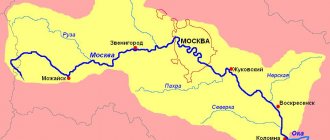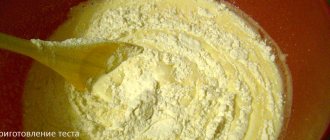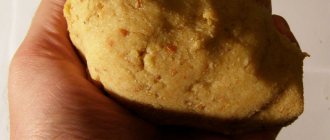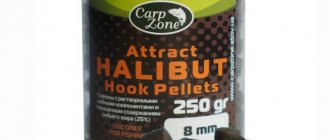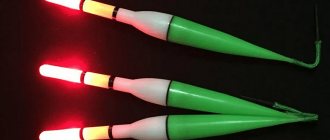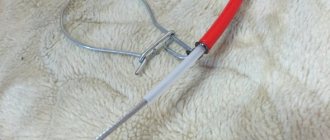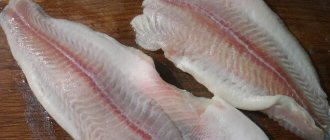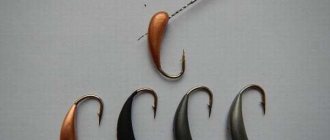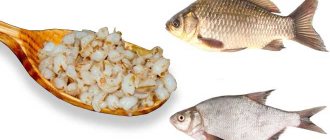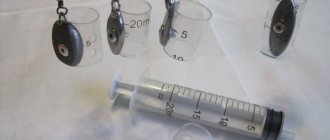Fishing for peaceful fish using dough is quite popular almost all over the world. However, such a bait is rarely used on carp. Most anglers prefer to fish with corn, peas, pellets, boilies and other options. Although in some reservoirs carp bite much better and more willingly on the dough. Therefore, let’s look at how best to use this attachment in carp fishing.
For carp fishing, sometimes the most effective bait is dough
Dough as a bait for catching carp and carp
Most fishermen do not want to use dough to catch carp, arguing that they only have to fish with float gear, and also that this bait often flies off the hook when casting. However, it is often the dough that is one of the most catchy baits when fishing for peaceful fish - in many reservoirs it is almost the only one capable of seducing fish.
Moreover, properly prepared dough and hooked onto a hook can be used even for long casts.
Dough as carp bait
Note! When going to any body of water for carp, you must have dough among other baits. This universal catch bait often helps out during bad bites.
All fishermen are familiar with the test for catching peaceful fish. Many people in early childhood used this attachment for fishing bleak, roach, silver bream and crucian carp on a light fly fishing rod with a goose feather float. It was made according to a simple recipe - a handful of flour, water, a teaspoon of sunflower oil and a pinch of sugar.
This approach will not work in carp fishing. You need to take the preparation of the bait seriously. Dough recipes are distinguished by the presence of additional components to give the bait the properties necessary for successful hunting for these large fish.
Advantages
Dough is a good carp bait that is definitely worth trying. Its main advantages:
- made from natural products;
- all ingredients are available in all grocery stores;
- a huge number of diverse recipes;
- is well absorbed by fish, almost without saturating it;
- is conveniently absorbed by carp without causing suspicion, thanks to its soft consistency;
- effectively cuts off small fish, especially ruffs, gobies and perches.
With the help of various aromatic additives, the angler can give the bait the necessary smell, which will attract fish from a long distance to the fishing zone. And food coloring will increase the contrast of the bait on any bottom structure.
Flaws
The carp test also has its disadvantages that cannot be ignored:
- The bait is not liked by those who do not like to cook on their own, but are accustomed to fishing with purchased boilies and bulk bait mixtures.
- If prepared incorrectly, it does not hold well on the hook, it can fly off when the equipment hits the water, and it is easily knocked down by fish when biting.
- Works effectively in warm water in summer.
- High demands on bait freshness. Carp ignores sour bait, which, on the contrary, will scare it away from the fishing zone.
Recommended reading: How to make semolina for fishing
A catchy dough doesn’t just need to be prepared correctly. You need to be able to put it on a hook and store it so that it does not spoil prematurely.
Advantages and disadvantages of dough as an attachment
The undeniable advantages of this bait when fishing for carp include the following:
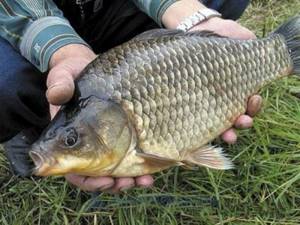
When biting, the carp easily sucks in the dough, providing an excellent hook.- Carp easily finds this bait at the bottom even in muddy water, since the dough leaves a cloud of small particles attractive to fish near it.
- When using flavorings, the bait can be given any scent to which the carp will respond better.
- Preparing this bait is quite simple, and does not use any expensive or scarce ingredients.
- The remaining dough can be used as bait.
However, there are some disadvantages that you will have to face when fishing for carp on dough:
- This bait can be attacked by small fish, so by-catch is possible.
- The bait needs to be changed every time you cast the tackle. Also, if there are no bites, you should change the nozzle every 20-30 minutes.
Techniques for preparing homemade boilies
Experienced fishermen know and understand what a boilie is and what it is used for. But since there are more and more anglers, it’s worth stopping to consider what a boilie represents before you start considering the technique of making it yourself.
The name of this bait comes from the English word, which literally means “cook”, “boil”. This is exactly what happens during the cooking process.
The set of main components consists of:
- flour;
- cereals;
- milk powder;
- eggs;
- flavorings;
- dyes.
Recipe for boilie dough
- Dry and liquid ingredients are mixed in separate containers.
- The contents of both containers are mixed and an egg is gradually added in the quantity required by the dough.
- Having cut out a small amount of dough-like mass, you need to roll it out into a so-called “sausage” and cut it into small cubes.
- The cube, after certain manual manipulations, turns into a small ball (the diameter of the latter will entirely depend only on the fisherman himself).
- Carrying out heat treatment of raw materials.
On the last issue, fishermen still cannot come to a unanimous decision - some argue that processing using a microwave oven is sufficient, others - that only cooking in boiling water.
Special studies have proven that treatment with microwave rays makes the bait loose and when placed in an aquatic environment, it quickly disintegrates into components. It’s better to boil the bait balls in water. The old fashioned way will be more reliable.
An attentive reader may think that the article does not cover the issue of adding flavors and dyes, but this is not so.
Flour, cereals and eggs are an indestructible basis, to which it is possible to introduce additional components, which will be discussed a little later.
Note! Since fishing happens in summer and demi-season, recipes for preparing bait balls have some distinctive features.
How to cook. Recipes for making bait
There are many recipes for preparing dough - most often they use corn flour, peas or potatoes , since these plant ingredients are especially attractive to carp.
Corn dough
To prepare it, it is better to take white corn , since it produces a bait with a more viscous consistency.
- Pour water into a wide saucepan and bring to a boil.
- Pour 0.8 of the volume of corn flour into a pan with already boiling water, carefully sift it through a sieve and level it with a spoon.
- Cover the contents with a lid and boil for 5 minutes.
- The container is removed from the heat, and the bait is stirred with a spoon for 10 minutes until the required consistency is formed - the ball of the finished dough should not crumble when pressed, be elastic and stick a little to your hands.
- If necessary, the bait is mixed by hand.
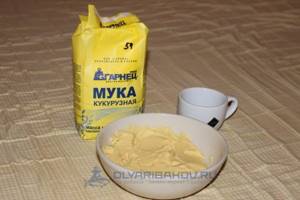
Pea dough
To prepare this bait, you can use either whole peas or instant pea porridge
- Peas are soaked in a container of water for 8-10 hours.
- Soaked peas are poured with water and cooked to a puree-like consistency.
- At the final stage, semolina is added to give the mixture the required viscosity.
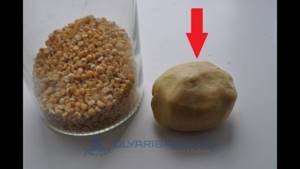
Potato dough
Potatoes can also be used to make carp bait.
- Several potato tubers are boiled in their skins and then peeled.
- Peeled tubers are grated on a fine grater, a little salt and sugar are added to them.
- Wheat flour is added to the grated potatoes in a 1:1 ratio, after which the mixture is mixed until smooth.
- The mixture is formed into a ball, which is boiled in water over low heat for half an hour.
- The finished mass is cut into pieces of the required size.

Corn dough for carp
Let's look at another recipe. It includes quite a few ingredients. However, there is no doubt about its effectiveness. The dough prepared in this way will definitely help you in carp fishing:
- First, you will need corn flour and breadcrumbs (use the volume yourself) in equal proportions. Both ingredients are mixed in a glass container.
- To these are added milk powder (4-5 spoons), half a glass of flour and semolina, as well as ground sifted cake. All components are thoroughly mixed. We're done with the dry mixture. Let's move on to preparing what we will use to moisten the dough.
- Take 2-3 chicken eggs. We separate them into a separate container. We also add liquid flavors and attractants to them. Homemade options include juice from canned corn or hemp oil. You can also add a little milk or vegetable oil. At the end, don’t forget to mix everything.
- Pour the resulting liquid into the dry mixture prepared in advance. Then roll it out well with your hands. If the mass is not thick enough, add more flour or boiled potatoes.
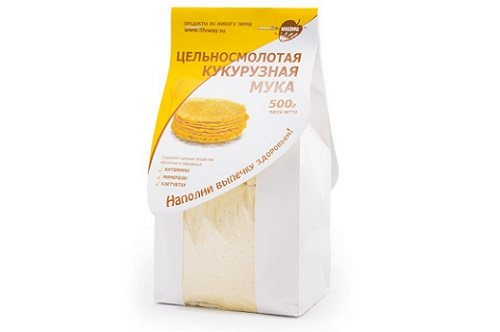
Carp dough can be prepared using corn flour
It’s a good idea to add a little margarine to this corn dough. It will create a protective film. As a result, the dough will “behave” better in water, not disintegrate so quickly and not become colored.
Aromatization of the nozzle
One of the advantages of the dough as a bait is the possibility of flavoring it, in which this bait can be given the necessary smell preferred by carp in a particular body of water. To do this, you just need to drop a little essence into the dough immediately before fishing or add a substance with the desired smell to it.
The most commonly used scents are:
- Garlic;
- Anise;
- Sunflower oil;
- Honey;
- Vanilla.
RECIPE FOR CARP “BALL” DOUGH
• Take 2 cups of plain flour, 2 cups of instant oatmeal, 2 cups of water. Mix everything in a saucepan and stir until it forms a dough. Next, add 1 tablespoon of vanilla, 4 tablespoons of syrup and sprinkle the dough with cinnamon. Cook the dough further and stir until a thick mass forms. The readiness of the dough is checked as follows: You need to tear off a small piece of dough from the overall piece. Roll out a ball from it and throw it on the floor - if the ball of dough does not jump 5 or 10 cm, then the dough needs to be cooked some more.
How to bait dough for carp fishing. Technique
When fishing for carp with dough, special attention should be paid to placing it on the hook , since if the bait is incorrectly attached, the bait can fly off the hook, causing a lot of inconvenience. The following tricks are most often used for this:
In this case, a spring removed from an ordinary disposable lighter is put on the shank of the hook. This allows the bait to stay on the hook much tighter. When using small hooks, the spring should be shortened.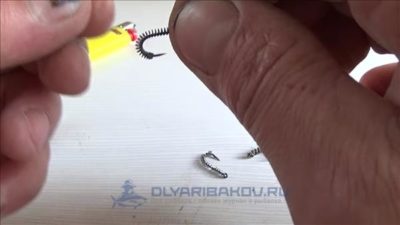
Hook with spring.- Adding cotton wool . Fluffed cotton wool fibers are added to the finished bait. They are a kind of reinforcement that connects the particles of the nozzle. Care must be taken to ensure that no inhomogeneities or lumps are formed.
- Using beads on hair accessories . A plastic bead is attached to the hair, onto which the bait is stuck. The bead holds the dough even during sharp long-distance casts. You can also use a foam ball instead - especially if fishing conditions (for example, muddy bottom) require a floating bait.
Attention. When fishing, it is advisable to take some dry wheat flour, since over time the dough can change its consistency, becoming less viscous. With such a loss of properties, you just need to add a little flour and knead the bait to the required thickness.
When fishing in reservoirs with a current, it is necessary to re-throw the tackle more often , as it will erode the dough faster. In order to reduce unwanted bites from small fish, balls formed from bait for catching carp and carp should not be made too small.
Plant baits when fishing for carp
Dough
This bait is traditional for many fishermen. There are many ways to make dough balls. The simplest is mixing wheat flour and sunflower oil (you can use any other oil instead). To make such bait more attractive to carp, eggs, sugar, and various berries are added to it.
Bread
Bread crumb is used in its usual form or with the addition of butter, potatoes or flour. To do this, the bread is soaked, mixed with additives and rolled into small balls.
Porridge
For fishing for carp, it is best to use millet porridge. It is first boiled well, then kneaded thoroughly and put in the oven. Then the porridge is chilled and cut into cubes of different sizes (depending on the type and size of the hook).
Peas and corn
First, the peas are soaked for about 10-20 hours in a soda solution, then boiled in a marching bag (20-60 minutes). After this, it can be easily placed on the hook. Corn can be used raw if it is soft enough. If the corn is old, it is boiled in salt water until it is soft enough to fit on the hooks. You can also take peas and corn in cans (that is, canned). Read the instructions on how to cook peas for fishing for white fish.
Potato
Another good bait for catching carp. Potatoes are selected that are firm and dense so that they do not overcook. This bait is most often cooked in its skin. Small yellow potatoes are best for fishing, but you can also take large ones by cutting them into several pieces.
Berries
The best berries for bait are:
- grape
- currants
- plum
- raspberries
- cherries or sweet cherries
- rowan
The berries are caught on the very tip of the hook.
All the necessary gear for catching carp is described in our guide - choosing a reliable carp rod, reel, fishing line and equipment.
The technique of catching carp with a feeder is described on this page.
Features of catching Volga carp.
Useful tips
Now you know how to prepare dough for carp. All that remains is to try to apply the acquired knowledge in practice. A few useful tips that will help you in the fishing process and in preparing this bait will not be superfluous:
- When kneading, the dough mass should be homogeneous. It is undesirable for it to contain grains or large unmixed particles.
- You need to change the dough attachment quite often. At least once every 20-30 minutes if there are no bites. It is also recommended to change the nozzle every time you cast.
- When fishing for carp, the dough can be placed on a hook and together with other baits. Thus, during carp fishing, a “sandwich” made from bloodworms or maggots, with a little dough rolled on top, has proven itself to be excellent.
Dough bait for carp fishing
Fishing for peaceful fish using dough is quite popular almost all over the world. However, such a bait is rarely used on carp. Most anglers prefer to fish with corn, peas, pellets, boilies and other options. Although in some reservoirs carp bite much better and more willingly on the dough. Therefore, let’s look at how best to use this attachment in carp fishing.
For carp fishing, sometimes the most effective bait is dough
Dough as a bait for carp fishing
In fact, dough is one of the simplest and most accessible baits for carp. Every angler can prepare it. You just need to know what ingredients to use and how to mix it correctly.
However, first I would like to talk in more detail about the test as a carp bait. Let’s say right away that there is no doubt about its effectiveness. Properly prepared dough attracts carp no worse (and maybe better) than expensive boilies and pellets. Then why do many carp fishermen ignore catching carp with this bait?
Most often, anglers refer to the fact that when using dough as a bait, they only have to fish with a float rod. Whereas this tackle is not considered carp, unlike a feeder, donkey, etc. At the same time, many carp anglers neglect fishing with dough due to the fact that this bait does not hold well on the hook, quickly flying off it and disintegrating in the water.
If the test is used correctly, fishing will be successful
One can easily argue with the last statement. If you prepare the dough correctly, its consistency will be so dense and elastic that you will be able to fish with this bait using long-distance casting gear. In addition, you can and should use special hooks on the equipment with a spring that fits the forend and prys it up. Then the dough will hold securely both when thrown, and when it gets into the water, and even directly at the bottom.
Advantages of fishing for carp with dough
Of course, no one is going to persuade you to catch carp exclusively with dough. Rather, we want to show that this bait can be quite effective even in comparison with more “famous” baits such as corn, boilies, pellets, etc. After all, it has a number of advantages:
- Dough is a highly digestible product. Therefore, carp and any other fish, in fact, cannot get enough of it.
- When biting, it is convenient for the carp to suck it in, which has a positive effect on its feeding activity.
- Well visible in any water (even dirty and muddy). It is not difficult for fish to find the bait even on a silty bottom. In addition, when dipped, the ball of dough always leaves a cloudy and attractive mark.
- Due to its consistency, it perfectly absorbs various flavors and also distributes attractive odors in water as efficiently as possible.
Dough is an affordable and effective bait for carp
- This bait cuts off the bites of many fish - small perch and ruff.
- Leftover dough that was not used for fishing can always be “given a second life.” For example, add it to bait or make homemade boilies based on it.
- Mostly it does not contain any rare or expensive components. You can make it with very simple ingredients that you can find in your kitchen or in the grocery section of the grocery store.
Agree, not every attachment can boast such a list. Although fishing with dough also has some disadvantages. The main thing is that other peaceful fish also like it. Especially roach and crucian carp, which are more likely to end up in your bycatch.
If necessary, the dough can also be added to the bait.
Simple dough recipes for carp
Many fishermen will say that the simplest dough recipe is soaked and crumpled bread crumb. However, such a bait can be effective when catching roach and crucian carp, but not carp, which needs more nutritious and multi-component food. Therefore, even the simplest recipe for this bait should include several ingredients.
Recipe No. 1
- Take 100-200 g of fragrant cookies. Preferably with vanilla or strawberry flavor.
- Next, put the cookies on a plate or any other container and crush them thoroughly with a spoon. You can also use a coffee grinder. This will save you some time and effort.
- Then add flour and water little by little to the crushed cookies. Mix the mixture thoroughly with a spoon or your hands (whichever is more convenient).
- To give a more attractive aroma and increase the nutritional value of the attachment, we recommend adding honey (literally 1-2 teaspoons) and egg yolk.
- At this point the nozzle is ready. We put it in an airtight container and put it in the refrigerator.
When preparing the dough for carp, you can add cookies
. In fact, this version of the dough can even be prepared directly while fishing. You just need to stock up on all the ingredients.
Recipe No. 2
- Pour wheat flour (about 250-300 g) and chopped oatmeal (100 g) with berry syrup. Jam will not work as it is quite thick. Thanks to the syrup, the dough will become brighter in color and will have an attractive smell and taste for fish.
- Mix it thoroughly.
- If necessary, add water (preferably milk). You should get an elastic ball that stretches and rolls well, but does not stick to your hands.
- Now all that remains is to roll the future bait a little in breadcrumbs or cake, the small particles of which will act as “dust particles” and additionally attract carp.
Fishing dough can be prepared with the addition of oatmeal
Corn dough for carp
Let's look at another recipe. It includes quite a few ingredients. However, there is no doubt about its effectiveness. The dough prepared in this way will definitely help you in carp fishing:
- First, you will need corn flour and breadcrumbs (use the volume yourself) in equal proportions. Both ingredients are mixed in a glass container.
- To these are added milk powder (4-5 spoons), half a glass of flour and semolina, as well as ground sifted cake. All components are thoroughly mixed. We're done with the dry mixture. Let's move on to preparing what we will use to moisten the dough.
- Take 2-3 chicken eggs. We separate them into a separate container. We also add liquid flavors and attractants to them. Homemade options include juice from canned corn or hemp oil. You can also add a little milk or vegetable oil. At the end, don’t forget to mix everything.
- Pour the resulting liquid into the dry mixture prepared in advance. Then roll it out well with your hands. If the mass is not thick enough, add more flour or boiled potatoes.
Carp dough can be prepared using corn flour.
It’s a good idea to add a little margarine to this corn dough. It will create a protective film. As a result, the dough will “behave” better in water, not disintegrate so quickly and not become colored.
Useful tips
Now you know how to prepare dough for carp. All that remains is to try to apply the acquired knowledge in practice. A few useful tips that will help you in the fishing process and in preparing this bait will not be superfluous:
- When kneading, the dough mass should be homogeneous. It is undesirable for it to contain grains or large unmixed particles.
- You need to change the dough attachment quite often. At least once every 20-30 minutes if there are no bites. It is also recommended to change the nozzle every time you cast.
- When fishing for carp, the dough can be placed on a hook and together with other baits. Thus, during carp fishing, a “sandwich” made from bloodworms or maggots, with a little dough rolled on top, has proven itself to be excellent.
The size of the dough balls should be chosen so as to weed out bites from small fish
- Do not freeze the dough before fishing or after cooking. It will become more moist and loose. Thus, it will be worse to stay on the hook.
- When fishing with dough, do not fish with balls that are too small. After all, carp is a large fish that easily and happily swallows large fractions of food.
- You can also add a little ready-made fine ground bait to the dough for catching carp. After all, it contains a lot of high-quality flavors and various ingredients that fish like.
How to prepare dough for carp - about this in the video:
promysel.com
Bread that has been kneaded in your hand will be the simplest and most basic test for carp. And if you add a little flavoring to this dough or dip it in corn juice, the properties of the dough for carp will be much improved.
In fact, there are a large number of all kinds of carp recipes made from soaked flakes, the so-called cornflakes. Ready-made biscuit dough, which is sold in the culinary market, can serve as an excellent bait; it can also be mixed with various ingredients.
In stores selling fishing supplies, you can buy ready-made dough for carp fishing, but as practice has shown, carp are very smart and do not really want to eat such dough all the time. For this reason, many carp anglers themselves invent their own dough recipes for carp.
Typically, dough ingredients are purchased from grocery stores, delicatessens, or health food stores. For the most part, after cooking, baits are boiled in boiling water, like ordinary dumplings.
Basic recipe for carp dough
Take one glass of ground oatmeal, preferably instant oats, and 2 glasses of boiling water. Then we begin to add ingredients to taste so that the amount of dry and wet dough ingredients is indicated as in the recipe.
Don't forget: Corn dough balls can be stored in the refrigerator for up to 3 weeks before use. Under no circumstances should corn dough for carp be frozen, as it will become loose and damp, completely unsuitable for carp fishing.
I bring to your attention recipes for carp dough, tested over many years:
CORN FLOUR DOUGH
• Half a liter of water is boiled in a saucepan. Mix 1 cup of wheat flour and 2 cups of ground instant oatmeal in a bowl. Add half a sachet of gelatin to boiling water. Reduce the gas on the stove and add 2 tablespoons of table sugar and one spoon of vanilla sugar. Cover the surface of the water with the dry mixture. Bubbles of boiling water will appear. They need to be covered again with the dry mixture. This procedure should be repeated until the dry mixture runs out. Afterwards, the resulting mass should be stirred for 30 seconds. Then remove the pan from the stove, dump the dough onto a board or foil and after it has cooled, knead it, roll the dough into a ball, wrap it in foil and put it in the refrigerator.
• Take corn flour, pour it into boiling water, stir and cook until a viscous mass is formed. Sugar is added to the mass and everything is covered so that the dough rests. After a few hours, the cooled porridge is mixed with white bread crumbs in a 2:1 ratio and kneaded thoroughly. This porridge is good when fishing in calm water.
• Pour 3 cups of river or rain water into a saucepan, add 1 cup of corn flour and 5 tablespoons of sunflower cake flour. After the porridge has hardened, it is rolled out into a layer of up to 10 millimeters, sprinkled with flour, and placed under pressure. The porridge should be kept under pressure until it cools completely. Then it is cut into pieces of the required size before fishing.
DOUGH RECIPE FOR CARP “DELIGHT”
• Mix in a saucepan over low heat a teaspoon of honey, 1 glass of water, one and a half teaspoons of vanilla and 4 teaspoons of sugar. As soon as our mixture deigns to boil, carefully pour in 1 cup of corn flour and quickly stir the mixture for about 3 minutes until the mixture becomes a homogeneous mass. Next, place the dough on a board and press it down with another board, leave for 2 minutes. Then the dough should be turned over and left again for 2 minutes, and then put into a storage bag.
RECIPE FOR CARP “BALL” DOUGH
• Take 2 cups of plain flour, 2 cups of instant oatmeal, 2 cups of water. Mix everything in a saucepan and stir until it forms a dough. Next, add 1 tablespoon of vanilla, 4 tablespoons of syrup and sprinkle the dough with cinnamon. Cook the dough further and stir until a thick mass forms. The readiness of the dough is checked as follows: You need to tear off a small piece of dough from the overall piece. Roll out a ball from it and throw it on the floor - if the ball of dough does not jump 5 or 10 cm, then the dough needs to be cooked some more.
OTHER DOUGH RECIPES FOR CARP
• All the recipes that I have listed in this article are just a small fraction of all the recipes for carp dough. There are a huge number of dough components: sweeteners, flavorings, crushed grains. The list of such components is endless, so experiment.
www.fisher-land.ru
Types of dough for fishing
- Raw - usually it is flour well mixed with water, most often wheat. It’s easy to prepare, but it’s relatively liquid, so it still needs to be thickened.
- Steamed - corn, pea or other flour placed in a water bath that moderately releases gluten. Preparation takes time, but the finished dough for fishing has good viscosity.
- Boiled - raw, molded into balls, boiled and dipped in vegetable oil for a few moments. It has a low tendency to stick and has high elasticity.

